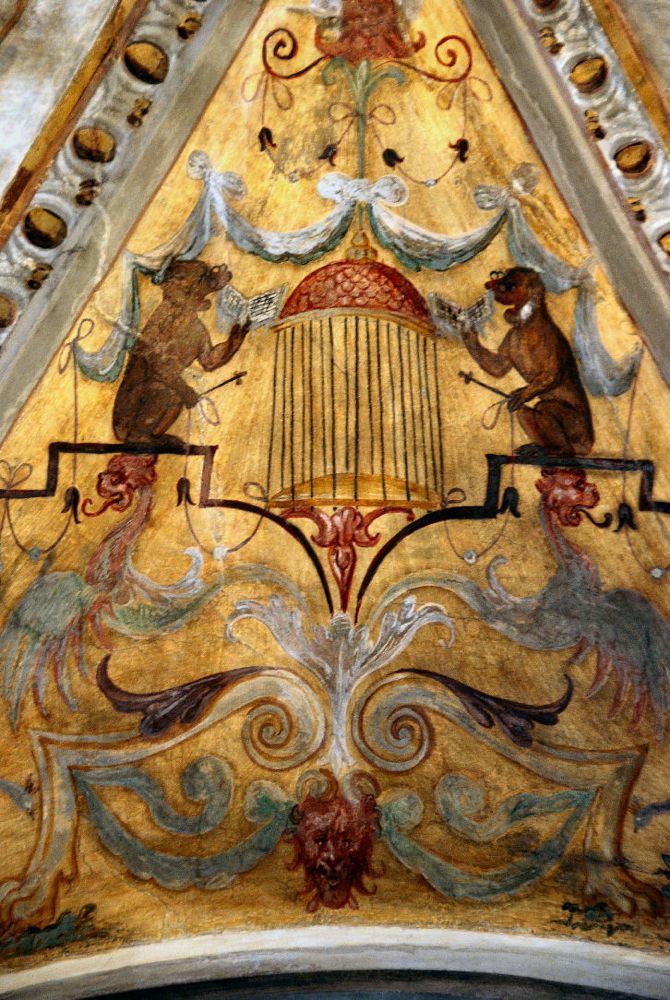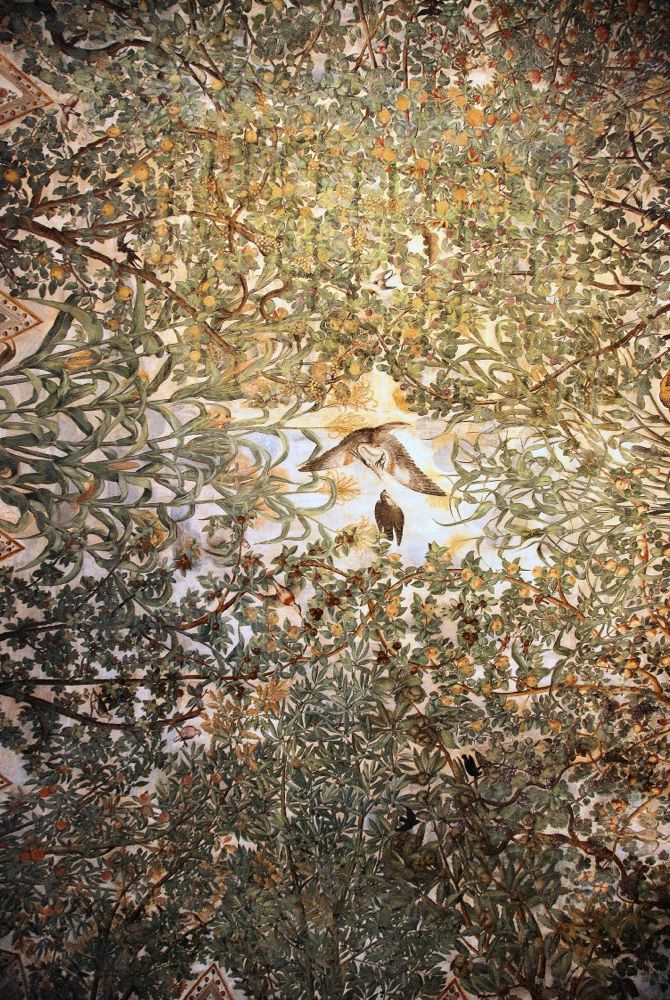The interiors of the Venetian palaces are usually in late Rococo style, as to say of the second half of the 18th century. The wealthy families enjoyed renewing the interiors – frescoes, plaster-work, paintings – according to the latest trends. They never felt less important than their ancestors, so they didn’t hesitate to change the older ornamentation.
One of the few older exceptions is Palazzo Grimani in Santa Maria Formosa. The Patriarch Giovanni Grimani who enlarged in the 16th century this lavish palace in Renaissance style was to become such a prestigious figure in Venetian history that his descendants left some of the many rooms with the original decoration.
In the late 19th century the properties had changed completely. Palaces were sold several times and the owners – Venetians, Italians, or foreigners alike – took away whatever they could, from doors to paintings and frescoes, and they tried even to detach the plaster-work from the ceilings.
Some buildings were carefully preserved, like for example Palazzo Barbaro, some other ones were restored almost to their previous beauty when owners could afford to buy in the auctions furniture and other objects in the late 18th-century style.
Some of the palaces were refurbished in the style of the time, that today we call Art Nouveau, of which Palazzo Franchetti Cavalli is one of the best examples.
See below some ceilings of various palaces in Venice.
Deutscher Text
Die Innenräume der venezianischen Paläste sind normalerweise im späten Rokoko-Stil gehalten. Die wohlhabenden Familien erneunten die Innenräume – Fresken, Gipsarbeiten, Gemälde – nach den neuesten Trends bis zum Ende der Republik.
Eine Ausnahme ist der Palazzo Grimani in Santa Maria Formosa. Der Patriarch Giovanni Grimani, der im 16. Jahrhundert diesen verschwenderischen Palast im Renaissancestil vergrößerte, sollte zu einer so angesehenen Figur in der venezianischen Geschichte werden, dass seine Nachkommen einige der vielen Räume mit der ursprünglichen Dekoration hinterließen.
Im späten 19. Jahrhundert hatten sich die Eigenschaften komplett verändert. Paläste wurden mehrmals verkauft und die Eigentümer – Venezianer, Italiener oder Ausländer – nahmen alles weg, von Türen bis zu Gemälden und Fresken, und sie versuchten sogar, die Putzarbeiten von den Decken zu lösen.
Einige der Paläste wurden im Jugendstil renoviert, wofür der Palazzo Franchetti Cavalli eines der besten Beispiele ist.
Unten sehen Sie einige Decken verschiedener Paläste in Venedig.











